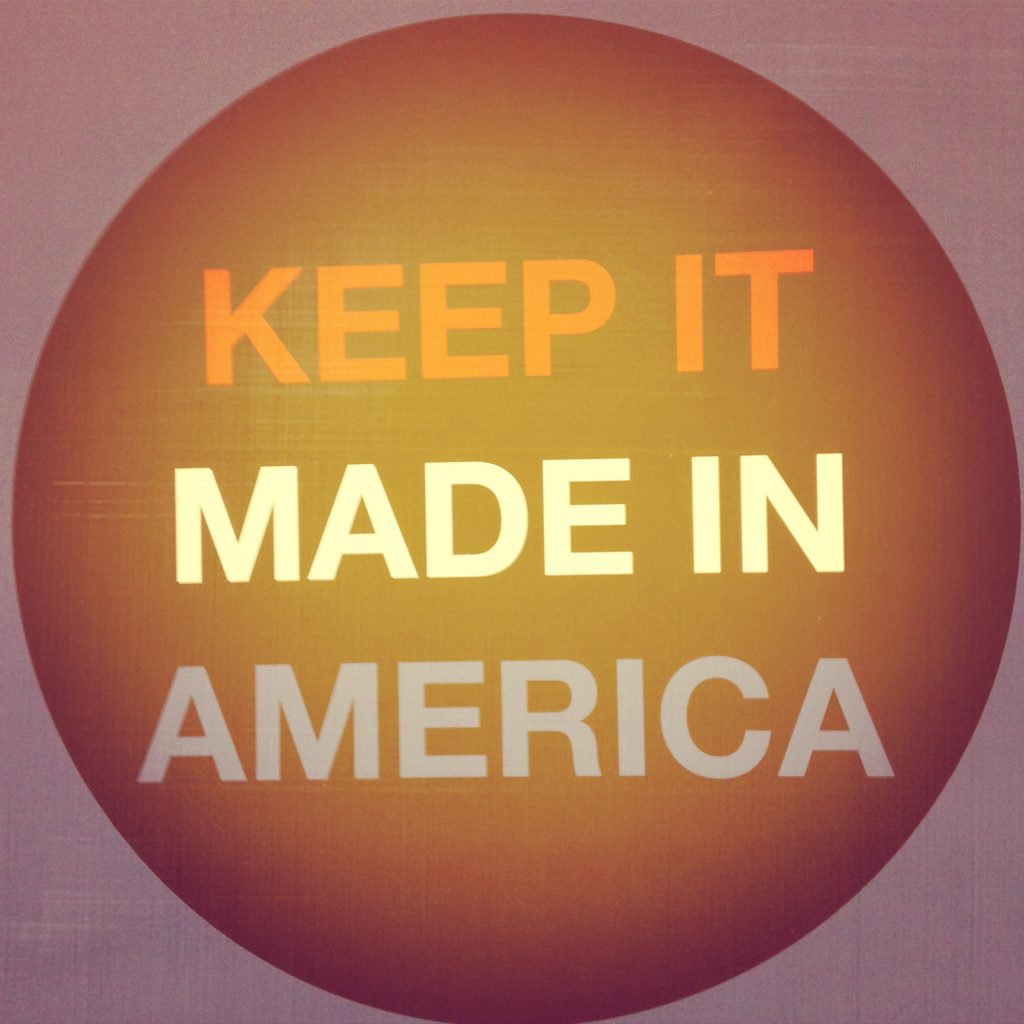
Policymakers can elevate U.S. manufacturing, but they have to get to work.
This article originally appeared in the Huffington Post.
A beautiful glass storefront on the hip 14th Street corridor in Washington, DC seems like an unlikely place to start a conversation about our nation's industrial heritage. But there's really no place better.
That storefront is the latest retail outlet of SHINOLA, an astonishingly successful Made in America goods manufacturer that is putting a lot of people to work in its hometown Detroit, defying the skeptics.
The founders of companies like SHINOLA and Filson show what's possible with the right amount of grit and ingenuity, a dedication to quality, and a fervent belief in the American worker.
Despite a steep employment downturn that started in 2000 and has only recently started to creep back in the positive direction, America still makes things – and, just importantly, the jobs in this corner of the economy still pay more for those with less than a four-year college degree.
That brings us to today – October 2, 2015. Also known as Manufacturing Day. Thousands of events across the country are underway that will open factory doors to young people exploring job opportunities.
I'm happy to be celebrating manufacturing and Made in America. Heck, I do it every day. But I must admit: I get a bit aggravated by politicians who readily treat factory workers and their hardhats as political props but fail to deliver on public policies that would help more Americans get these good jobs.
During the 2012 election cycle, for instance, the American factory floor was the most ubiquitous image in political advertising. It featured a pledge from the stump by President Obama to create 1 million new manufacturing jobs during his second term, a goal he's not close to reaching. To be fair, this administration and Congress have worked together on some key manufacturing issues, such as research funding and skills training, but those are the exceptions to the rule.
Today, not much has changed on the campaign trail. There's lots of rhetoric coming out of the various 2016 presidential contenders about getting tough on trade and reshoring jobs – Donald Trump's hot air about penalizing companies for moving jobs offshore springs to mind – but it's all very short on specifics.
The specifics shouldn't be this hard to come by. They aren't hiding anywhere; it's not like we don't know what will work to boost America's manufacturing sector and bring back more of those jobs to which Trump and other candidates so often allude. Here are a few:
- Pass a long-term infrastructure bill. This is something that nearly every American, regardless of political affiliation, wants to see happen, because we all drive on the same crumbling roads and ride the same aging rails. A better infrastructure network in the states would mean U.S. manufacturers could get their goods to market faster, and building it would put a lot of people to work.
- Make sure that infrastructure is American-made by strengthening our Buy America laws. U.S. Department of Transportation funds all come with a rule that the materials used in construction projects must be sourced from American companies, guaranteeing that any public money spent stays in our economy. Buy America laws are commonsense, and should be extended to every corner of government spending.
- Get serious about currency manipulation. I'm not talking about the monetary policy tinkering central banks do to steer their economies. I'm talking about the hoarding of foreign currencies that some governments do to prop up their exports at the expense of our own. China, America's largest trading partner and a non-market economy if there ever was one, has meddled with the renminbi for decades to boost its trade advantage. Japan, Vietnam, Malaysia, South Korea, and other nations do this from time to time.
- Fully fund a network of manufacturing research institutes, so they can spur R&D for American manufacturing technology. This has been started in earnest by the Obama administration, with the president citing Germany's existing network, the Fraunhofer Institutes, as a model to exemplify. Eight institutes have been launched or announced in the USA, but we need many more.
- Invest, heavily, in workforce training by liaising businesses with high school STEM, community college, workforce training, and apprenticeship programs. Just last month, the White House announced $175 million in funding to expand its American Apprenticeship Grants program. That's good news, and it's a great program. But we can add considerable scale to this. We shouldn't shy from spending money on programs that pay dividends down the road.
- Lay out a tax reform plan that acknowledges manufacturing's outward-facing economic role. Sooner or later, a national overhaul of the tax code is going to take place. When it does, the manufacturing sector shouldn't finance a rate cut for the retail and service sectors whose markets are domestic and aren't going anywhere. Manufacturers compete worldwide. We shouldn't make it harder for them to do so.
Even agreeing to half of these proposals would constitute a major step toward a national manufacturing strategy, something our country could sorely use.
In fact, here's a thought: By the time Manufacturing Day 2016 rolls around, we'll still be waiting to find out who the next president will be. He or she could make a big splash well before that by actually spelling out their Made in America plan – and then getting it done. We stand ready to work with the administration and Congress to deliver.
Browsing the glass cases at SHINOLA on 14th Street, it's easy to see what's possible in the face of considerable odds. Supporting American makers and workers is the first step. You can do it with your own pocketbook by checking out made in America options, and you can do it with your voice and vote by ensuring our leaders know that manufacturing matters – not only on Manufacturing Day, but on every other day too.
